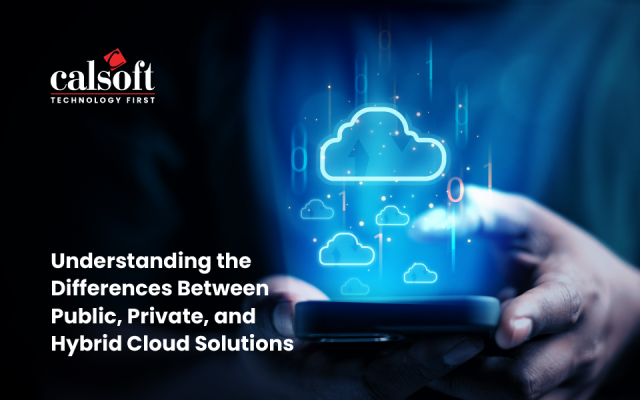Infrastructure hosting has come a long way. From on-premises environments to the Public Cloud, private, and now hybrid. New models are constantly being introduced, each providing new options for organizations in terms of scope and value.
On-premises environments offer tremendous security and accessibility benefits. But the value of cloud computing in scalability, instant provisioning, virtualized resources, and economical storage is now established. Although the Public Cloud was the first to become mainstream, perceived security concerns paved the way for the growing adoption of the Public Cloud. Did that reduce the popularity of Public Cloud? In my opinion, no.
Today, many businesses are moving away from the Public Cloud – back to the Public Cloud. In fact, IDC expects the Public Cloud spending to reach $210 billion this year.
Here’s why I think Public Cloud lost to Public Cloud (for a while), and why they are coming into the spotlight, yet again!
The brief decline
When Public Cloud was first introduced, it took the world by storm. The fact that organizations could access resources based on their need and pay only for what they consumed made Public Cloud a great business enabler. However, very soon, data security concerns drove enterprises to consider the Private Cloud for specific, mission-critical business applications.
- Private cloud was said to improve security and privacy, giving organizations more flexibility and control over their mission-critical apps and data.
- Organizations could achieve better control over data, users, and information assets as compared to the Public Cloud where control was limited.
- Private cloud was also thought to offer better performance – by being deployed inside an organization’s firewall. It ensured better efficiency and network performance.
- Organizations could easily customize resources based on their requirements, which was not the case with the Public Cloud as they had to make do with whatever they were offered by the provider.
- While the Private Cloud gave organizations tighter control over data which led to better compliance, Public Cloud service level policies and compliance were completely enforced by the service providers.
Due to these limitations, suddenly the world saw the Private Cloud as being more reliable, and the Public Cloud as more vulnerable to attacks and breaches.
Public cloud 2.0
Despite the benefits of the Private Cloud, the hype has started to wane. More and more organizations are moving to the Public Cloud, and this move is primarily driven by scalability, performance, and need for better or faster access to resources. Investments in Public Cloud are at an all-time high, and the coming years will see Public Cloud adoption grow, with Private Cloud use to decline. Here are some reasons why Public Cloud are becoming popular, all over again:
- Public cloud is more economical: For any business to operate efficiently, the cost is a major consideration. With the Public Cloud, organizations don’t have to buy, install, operate or maintain servers or other equipment – as they would with on-premises or Private Cloud. Also, no Private Cloud can beat Public Cloud vendors like Google and Amazon on price. And any unplanned projects can drastically impact the overall cost of investment in Private Cloud, which is not the case with the Public Cloud where spare resources are offered at the same price.
- Innovation comes as a standard: Any organization opting for the cloud needs to carefully think about the back-end infrastructure that makes the most sense for their business. It’s usual for the Private Cloud to use older technology than the Public Cloud. With the Public Cloud, innovation comes as a standard: new features, updates, and capabilities will constantly be introduced. With the Private Cloud, this becomes your responsibility.
- Public cloud offers better utilization: With the Private Cloud, the onus is on the organization to grow and service all the infrastructure needed to cater to spikes in demand across divisions or functions. On the other hand, the Public Cloud is designed as a true multi-tenant environment. Many organizations can simultaneously use resources – hence, they have better utilization rates while being highly cost-efficient.
- Security is constantly updated: Contrary to the belief that security is lackluster in the Public Cloud, the fact is, their security posture is constantly being updated. Public cloud providers have been constantly investing in the latest security technology and driving innovation. These vendors attract the world’s most talented testers and engineers to build solutions to protect the cloud infrastructure. Also, the Public Cloud is constantly subjected to penetration testing that strengthens the standards and makes it far less vulnerable to attacks than used to be the case.
- Flexibility provides a business advantage: For organizations that witness fluctuating demands, investing in the Private Cloud can become an expensive endeavor. An increase in demand requires organizations to make a substantial investment to access more resources. However, with the Public Cloud, organizations can access resources as needed, and scale up or down based on their requirements.
Achieve business outcomes quickly and efficiently
As market needs, customer demands, and competition evolves, businesses are embracing the cloud to drive value. With anytime, anywhere access to compute resources, organizations are able to meet the spikes in demand, and also scale easily and effectively. And the pay-as-you-go model is helping them avoid massive upfront investments while being extremely agile and responsive to changes.
While the Private Cloud has been a valid choice for industries where security is an overriding concern, I believe the Public Cloud will overtake the Private Cloud. With innovation, security, flexibility, and utilization – at a much lower cost, Public Cloud is again presenting itself as the enabler businesses are looking at to achieve outcomes quickly and efficiently.






